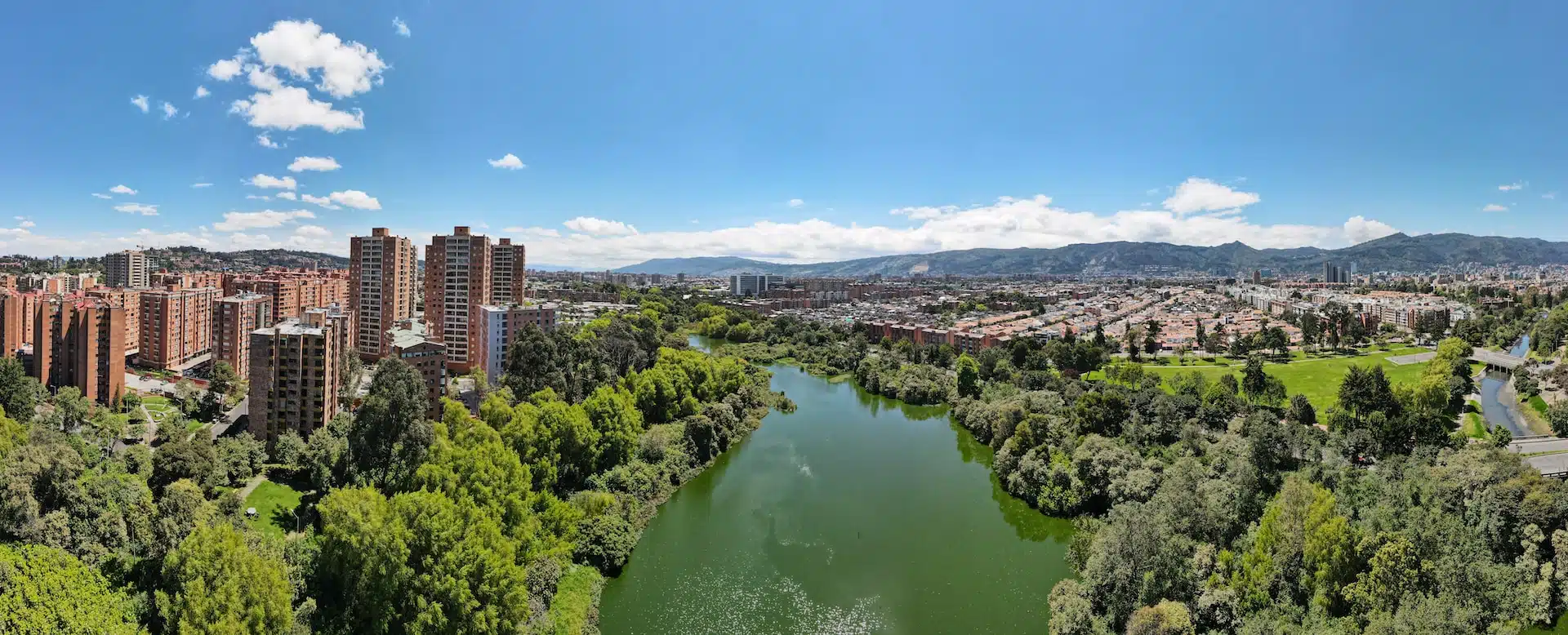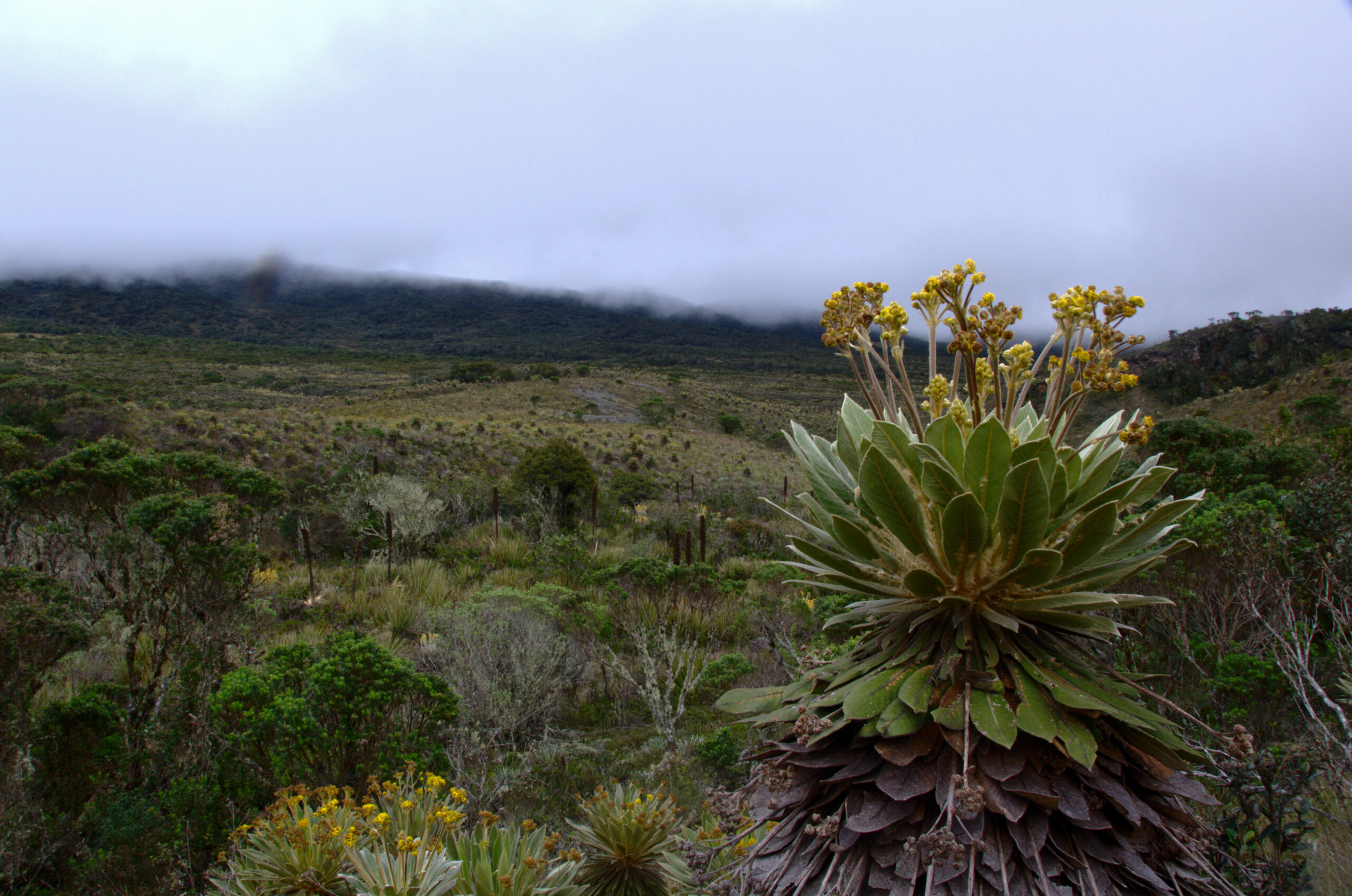
The Guacheneque Páramo, where the Bogotá River originates, represents the second largest source of drinking water for the city of Bogotá, Colombia. It is a key ecosystem that supplies water to approximately 25% of the city’s 7 million inhabitants. However, due to the degradation of the ecosystems and water contamination, this basin has not realized its potential as a water source. The utility in charge of water management in the city — the “Empresa de Acueducto y Alcantarillado de Bogotá” (EAAB) — faces escalating challenges to ensure a clean and reliable water supply for a growing population. These challenges include high treatment costs due to the presence of sediments and contaminants.
As the value of natural ecosystems for human well-being is increasingly recognized, global approaches to water management are increasingly focusing on the inherent capacity of natural ecosystems to improve water capture, provision, quality and distribution. Unlike a traditional approach in which water management issues are addressed solely with human-created infrastructure, natural infrastructure focuses on the protection, restoration and management of natural ecosystems in close collaboration with the communities that reside in the territory.

A new report — the result of an innovative collaboration between World Resources Institute (WRI), Conservation International (CI) Colombia and EAAB — shows that investing in a portfolio of highly focused actions in the upper basin of the Bogotá River can generate significant cost savings in water treatment and offer additional benefits for the city and surrounding communities.
The Challenge Preventing Clean and Reliable Water in Bogotá
The upper basin of the Bogotá River is highly degraded and contaminated by the expansion of the agricultural, industrial and urban sectors. The result is a high load of sediments and pollutants, which translates into high water treatment costs. These costs include the massive amount of electricity required to pump and distribute the water, as well as the large amount of chemical products needed throughout the purification process, such as to disinfect.
The Tibitoc Drinking Water Treatment Plant, managed by EAAB, is responsible for purifying more than 8 million liters of water daily from the upper basin of the Bogotá River. Despite enormous efforts and high technical capacity in Tibitoc, treating this water for safe consumption by a growing population presents a great challenge.
EAAB already has successful experiences investing in natural infrastructure focused on ecosystem conservation and restoration in more than 400 hectares that were acquired for these purposes.
However, to address the basin’s degradation and contamination, there must be a focus on areas complementary to the company’s properties. As such, it is necessary to work together with the owners of the properties and the local communities.
A Cost-Effective Portfolio for Water Management in the Bogotá River
Using the Green-Gray Assessment methodology developed by WRI, the report found that investing in a natural infrastructure portfolio focused on reducing water treatment costs in Tibitoc, while meeting water quality standards, is financially profitable in an investment period of 30 years.
The report identifies a portfolio of activities with great potential to improve water quality in the basin. This is based on CI’s “Colombia Sustainable Landscape Strategy of the Bogotá Region,” which has lessons on implementing nature-based solutions for adaptation to climate change and water security. For more than a decade, CI Colombia has implemented conservation, restoration and development activities for sustainable production systems. These activities take a highly participatory approach with the rural communities that reside in the territory, which has made it possible to generate a relationship of mutual understanding, guarantee the participation and involvement of the communities, and generate benefits that meet local needs.
The natural infrastructure activities in the portfolio includes sustainable livestock activities and ecosystem restoration of 2500 hectares, equivalent to 2% of the basin, with a total cost of US$5.3 million. This investment amount is less than the current annual cost of electrical energy and chemical products in Tibitoc.
In turn, it is estimated that the portfolio will generate savings of $44.6 million due to the reduction in electrical energy requirements and the use of chemical products, as well as reduced wear and tear on gray infrastructure. This drop in costs is a result of the impact of the investments on sediment and nutrient loading in the Tibitoc intake, which was modeled with geospatial analysis using InVEST models.
The portfolio generates a positive net present value of $0.6 million, meaning that the investment is profitable for EAAB. The project’s rate of return is 13%, above the rate of return required by EAAB to approve investments in infrastructure projects. The investment recovery period is 25 years, which coincides with natural infrastructure portfolios in other contexts. These results are highly conservative, since they do not consider other benefits of natural infrastructure. Additional benefits include possible impacts on livelihoods and community well-being in terms of income, job creation and capacity-building, as well as other environmental benefits like climate adaptation, carbon sequestration and biodiversity conservation.
The Potential of Natural Infrastructure in Water Management
This report gives one of several examples of how natural infrastructure can improve water management in Latin American cities. For example, in the city of Xalapa, in Veracruz, Mexico, various collaborative basin management processes have been developed to avoid ecosystem degradation in supply basins, such as the Compensation Program for Environmental Services, Prosapix.
In Brazil, the government of the state of Espirito Santo adopted a law that prioritizes the restoration of critical forested areas for water in the Vitoria metropolitan area. This law was based on a spatial and financial analysis by WRI’s Cities4Forests team, which found that the Cesan water company would benefit financially from investing in natural infrastructure.
Despite important advances in Latin America and the Caribbean in terms of natural infrastructure investments, this type of investment is underdeveloped in Bogotá. An important reason is the low-level of understanding that exists regarding the potential of natural infrastructure to improve the quality and quantity of water and how to financially evaluate this type of investment. The report seeks to address these challenges.
In the case of the upper Bogotá River basin, promoting conservation, restoration and sustainable use actions offers great potential to improve the performance, resilience and diversification of water management systems. Specifically, this investment can:
- Reduce the current reliance on the Chingaza system as the city’s main water source, as such reliance poses water security risks and jeopardizes the integrity of páramo ecosystems.
- Help Tibitoc treat more water and at a lower cost, which would reduce operating costs and help ensure water supply.
- Contribute to climate adaptation and mitigation, among other additional benefits in the basin.
In the context of growing financing for climate adaptation and mitigation worldwide, there is an important area of opportunity to create synergies and collaborations between investors for water management in Bogotá. The report is an important first step in driving these synergies and collaborations.
Measures to Catalyze Action and Collaboration
The results of the report confirm the financial feasibility of investing in natural infrastructure as a complementary approach to traditional infrastructure for water management in the upper Bogotá River basin. These investments could generate value for the EAAB, for the city and surrounding communities, and for other stakeholders in the region. Instead, the costs of inaction are expected to remain high and could even increase if degradation and pollution processes in the basin are not reversed. Added to this, the climate emergency could further compromise the vulnerability of the water system.
The results of this study can serve to catalyze cooperation between different teams within the EAAB, as well as between other actors in the basin. This could include the water company, environmental authorities, local communities, project developers and potential funders. EAAB can benefit from investing in this portfolio and can play an important role in promoting this opportunity, but it needs to develop institutional alliances to trigger synergies in the planning and execution of projects.
There is already a wide range of experiences in the implementation of natural infrastructure investments in the basin, including those carried out by the EAAB on its own properties and by CI Colombia with rural communities. Sharing these experiences and developing broader institutional alliances would also make it possible to identify the factors that hinder or facilitate the implementation of investments in natural infrastructure. These factors may include the legal framework, the level of interest in participation among communities, or local project implementation capacities.
In terms of financing, there is an important opportunity to explore access to existing funds or to develop innovative mechanisms. There is a set of external sources of financing, such as green bonds or loans from multilateral banks, that could be used. Also, internal financing mechanisms could be developed within EAAB, such as changes in general budgets or changes in rates, as well as mixed financing instruments with other institutions.
By leveraging lessons learned, evaluating possible institutional arrangements and exploring various financing options, the results of this study can move from theoretical to reality.
A version of this article originally appeared in Spanish on WRIMexico.org.
Santiago Izquierdo-Tort is an Associate Researcher at the Institute of Economic Research at the National Autonomous University of Mexico.
Laura Bulbena Janer is a Manager with the Cities4Forests initiative at WRI Colombia.
Natalia Acero is Director of the Water & Cities program at CI Colombia.
Suzanne Ozment is a Senior Associate with the Cities4Forests and Natural Infrastructure initiatives at WRI.






